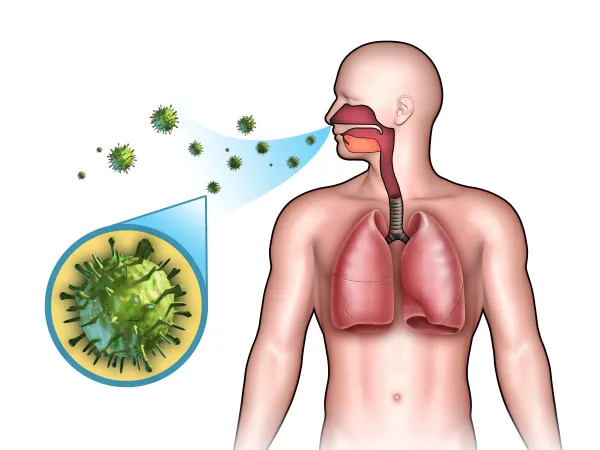Primary Care Coding Alert
Fly Through Flu Vaccine Coding with this Clip-and-Save Chart
Find out which code is making a comeback this season. Whether your clinic administers just a few flu vaccines or you run a seasonal flu vaccine clinic, you’ll need to know which vaccine codes are which as winter ramps up. Here you’ll find all the codes, guidelines, and recommendations you need to get you through the season. Continue to Ignore Trivalent Vaccine Codes The Centers for Disease Control and Prevention’s (CDC’s) Advisory Committee on Immunization Practices (ACIP) recently published its updated recommendations for, and continued guidance on, flu vaccinations. Consistent with last year’s recommendations, the ACIP announced “all flu vaccines for the 2022-2023 season are quadrivalent vaccines, designed to protect against four different flu viruses, including two influenza A and two influenza B viruses.” So, this season, you’ll choose from only the quadrivalent vaccine codes listed in the clip-and-save table appearing later in this article. Note: If you think back to last year, you’ll remember that two CPT® quadrivalent codes — 90630 (Influenza virus vaccine, quadrivalent (IIV4), split virus, preservative free, for intradermal use) and 90688 (Influenza virus vaccine, quadrivalent (IIV4), split virus, 0.5 mL dosage, for intramuscular use) — were not in play. This year, you’ll need to bring 90688 back into your coding arsenal. Know the 3 Vaccines for Patients 65 Years and Older For your patients aged 65 and older, the CDC recommends you use the following vaccines: The CDC recommends these three vaccines equally, giving no preference to one over another. However, they do have a suggestion for what to do if these vaccines aren’t available. “If one of the three preferentially recommended flu vaccines for people 65 and older is not available at the time of administration, people in this age group should get a standard-dose flu vaccine instead,” instructs the CDC (www.cdc.gov/flu/season/faq-flu-season-2022-2023.htm). Check Out Updated Flucelvax® Quadrivalent Age Approval As the clip-and-save also indicates, both 90674 (Influenza virus vaccine, quadrivalent (ccIIV4), derived from cell cultures, subunit, preservative and antibiotic free, 0.5 mL dosage, for intramuscular use) and 90756 (Influenza virus vaccine, quadrivalent (ccIIV4), derived from cell cultures, subunit, antibiotic free, 0.5 mL dosage, for intramuscular use) are now appropriate for children 6 months of age or older. This comes approximately one year after the vaccine approval age was changed to 2 years or older from the previous approval age of 4 through under 18 years. Expect a Lack of Prefilled Afluria You won’t find prefilled Afluria® Quadrivalent flu shots with a 0.25 mL dosage for children aged 6 to 35 months this year. The Afluria® Quadrivalent vaccine itself is available, but your practice will need to administer the recommended dose from a multidose vial, reporting the 0.25 mL dosage using 90687 (Influenza virus vaccine, quadrivalent (IIV4), split virus, 0.25 mL dosage, for intramuscular use). For the 0.5 mL single-dose syringes for patients 3 years or older, you’ll report 90686 (Influenza virus vaccine, quadrivalent (IIV4), split virus, preservative free, 0.5 mL dosage, for intramuscular use). If the provider pulls the 0.5 mL dosage from the multidose vial instead, you’ll report 90688 (Influenza virus vaccine, quadrivalent (IIV4), split virus, 0.5 mL dosage, for intramuscular use). Observe This COVID Guidance The ACIP continues to say OK to providers co-administering an influenza vaccine with a COVID-19 vaccine if the patient is “eligible and the timing coincides.” ACIP is not recommending patients wait to get their COVID-19 or flu vaccine for the purpose of simultaneous vaccination. Remember Administration Codes For the flu vaccinations, make sure you add an immunization administration code from 90460/+90461 (Immunization administration through 18 years of age via any route of administration, with counseling by physician or other qualified health care professional…), 90471/+90472 (Immunization administration (includes percutaneous, intradermal, subcutaneous, or intramuscular injections) …), or 90473/+90474 (Immunization administration by intranasal or oral route …) as appropriate. For Medicare beneficiaries, you should use G0008 (Administration of influenza virus vaccine).


Related Articles
Primary Care Coding Alert
- News You Can Use:
Fly Through Flu Vaccine Coding with this Clip-and-Save Chart
Find out which code is making a comeback this season. Whether your clinic administers just [...] - Behavioral Health:
Review What’s Required for Coding Behavioral Health Integration
Find whether 2023 consult codes will affect BHI coding. Many communities within the United States [...] - E/M Coding:
Curb Your Confusion on How to Count Data Toward MDM
Also learn expert advice on when not to count data. If you consider data counting [...] - You Be the Coder:
Do You Know the New COVID-19 Booster Codes?
Question: The newest COVID-19 boosters have come out recently. What the codes are, and which [...] - Reader Questions:
Look for Keywords to Properly Report Candidiasis
Question: I’ve been using B37.3 to report yeast infections, but the last claim I submitted [...] - Reader Questions:
Gear Up for Solid GERD Coding
Question: Our provider established that one of our patients suffers from gastro-esophageal reflux disease (GERD) [...] - Reader Questions:
Find Out When to Report a Flu Diagnosis
Question: I thought I had to wait for the test result before coding a flu [...]




